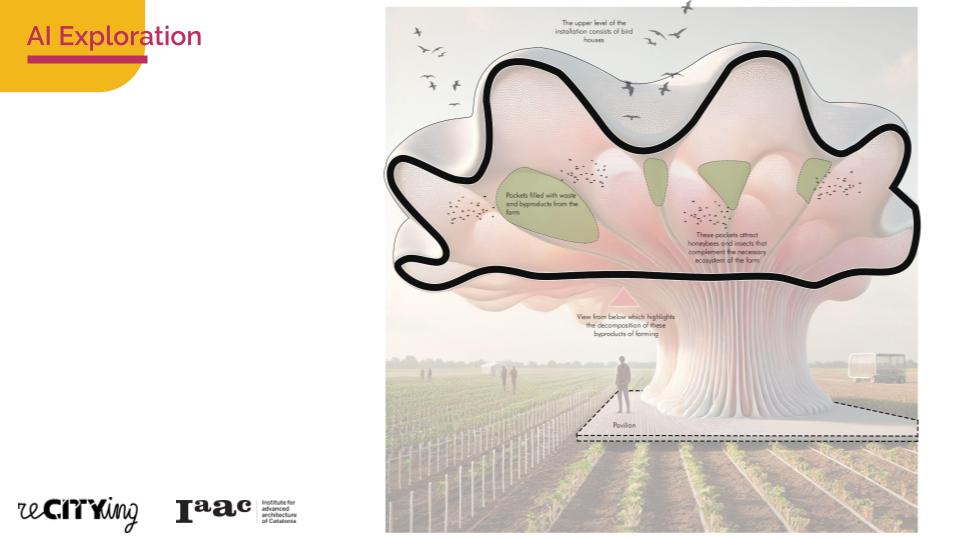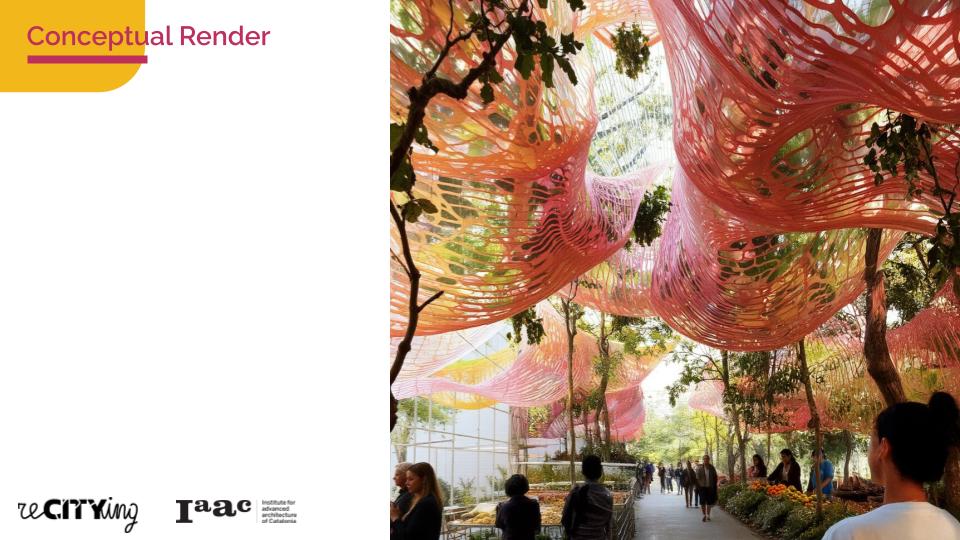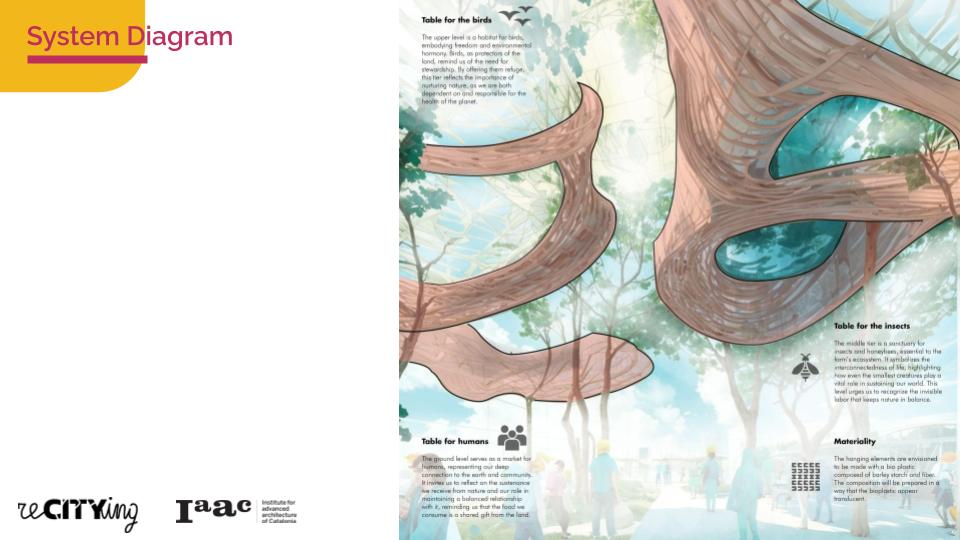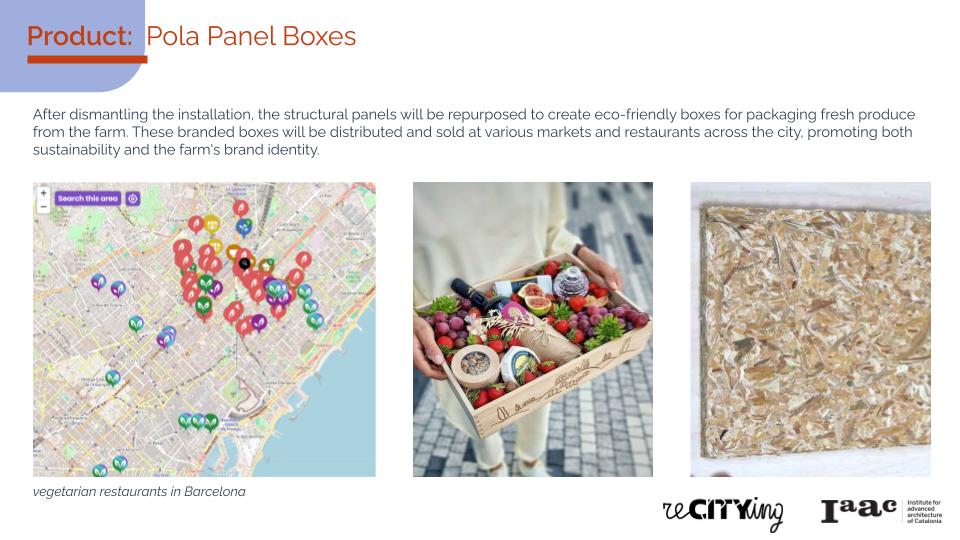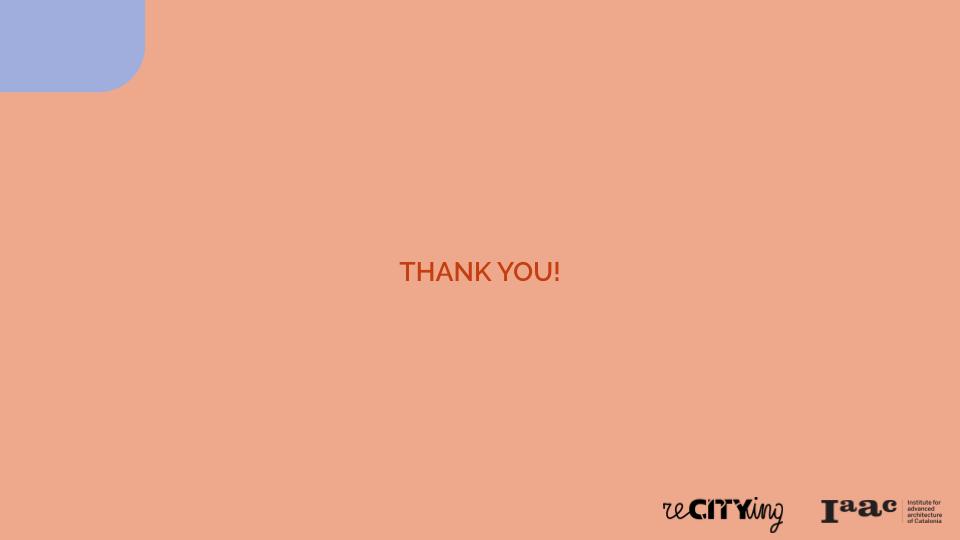Bringing Producers, Consumers and Nature Together
This project aims to connect local food producers, consumers, and nature in a symbolic way. The metaphor of a “table” represents unity and sustenance, gathering people across different genders, ages, and social classes.
This installation, built from waste materials and invasive plants like Pontederia Crassipes, doubles as an ecosystem, attracting species and educating people about the importance of nearby farms. The concept helps farmers struggling with brand identity by offering eco-friendly packaging and leveraging Barcelona’s vegetarian culture to market farm produce. The structure decomposes, returning to the soil as compost after fulfilling its purpose.
The installation fosters awareness of the farms near the city, highlighting the need for more visibility of their role in sustainable food production. Through partnerships with local businesses, the project aims to promote the farmers brand and encourage consumers to recognize the value of these small, often overlooked, agricultural spaces.
Ultimately, the “Table” serves as a multi-species gathering point where the interaction of natural and human elements can be observed, reminding visitors of the in visible yet vital relationships between food production, consumption, and the surrounding ecosystem.
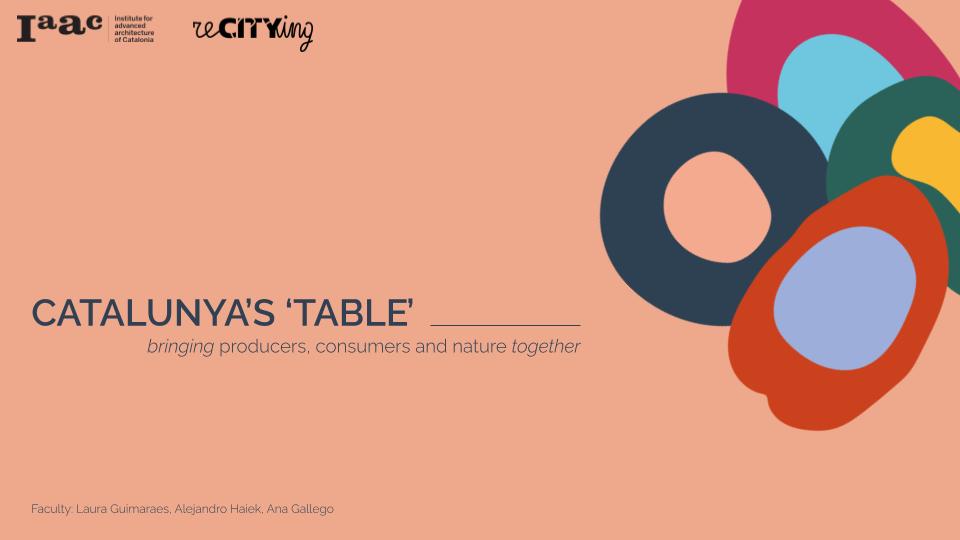
The concept of Catalunya’s “Table” is to create a metaphorical table that represents a gathering space not only for people but also for various species—humans, animals, in-sects, and plants—that interact and depend on each other.
This “table” grows from the ground using locally available materials such as invasive plants like Pontederia Crassipes, which is both a nuisance and a resource in this context.The design integrates the farm-to-table philosophy, emphasizing the connection between food production and consumption. It’s not just a symbolic gathering space for people of different genders, classes, and ages, but also for nature, contributing to a sustainable ecosystem. The pavilion, built from bioplastics and repurposed waste materials, physically attracts insects and small animals, showing how human consumption can work in harmony with natural processes.
The ephemeral nature of the installation is a key aspect of the design, as it eventually decomposes and returns to the soil, completing a natural cycle. This circular process mirrors the life cycle of the plants and animals involved, reinforcing the idea of regenerative design. After the installation is dismantled, its structural elements, like the bioplastic panels made from Pontederia and barley, will be repurposed to create eco-friendly packaging for local produce, which can be distributed in Barcelona’s vegetarian restaurants.
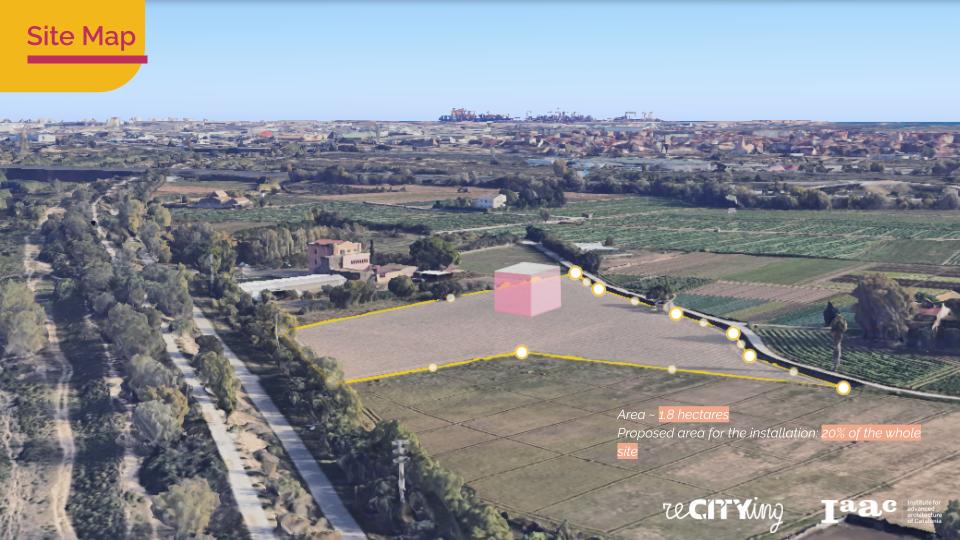
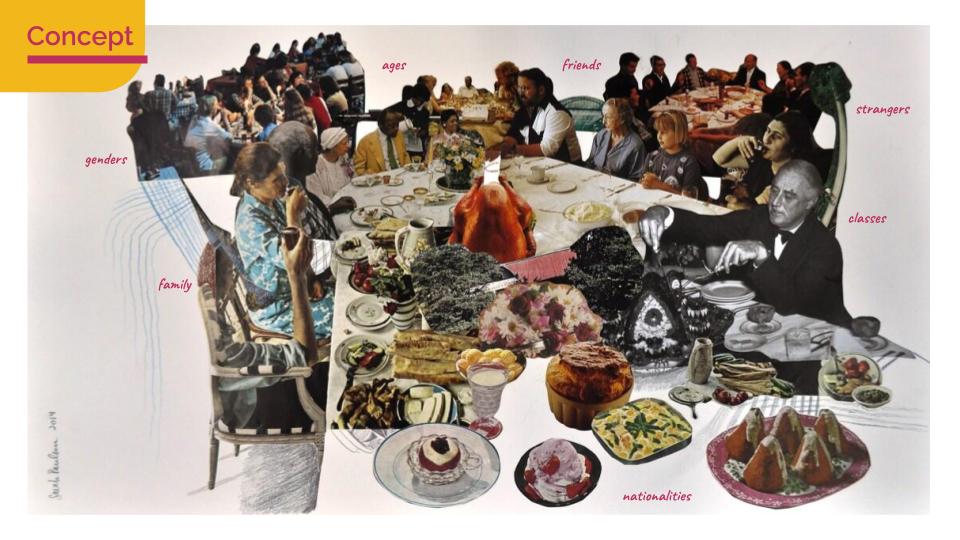
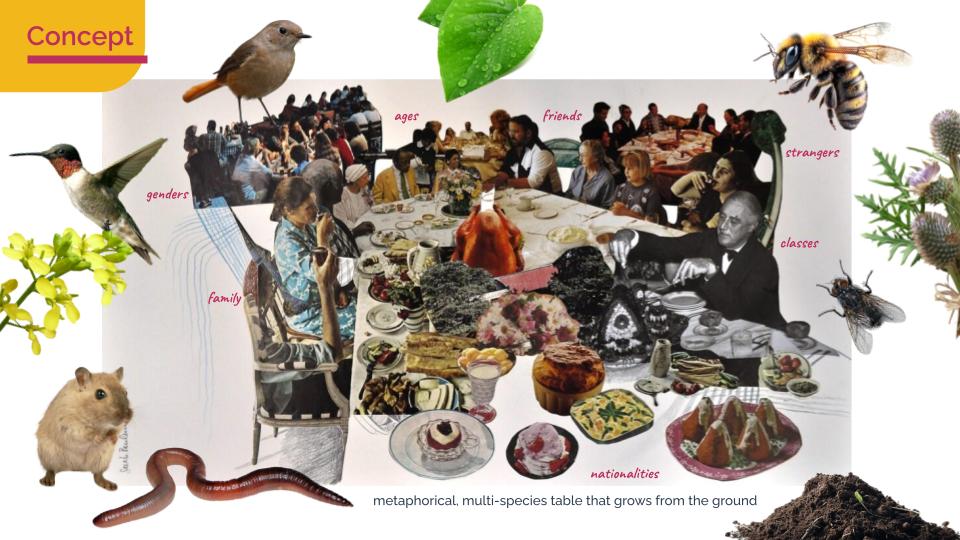
The concept of Catalunya’s “Table” is to create a metaphorical table that represents a gathering space not only for people but also for various species—humans, animals, in-sects, and plants—that interact and depend on each other.
This “table” grows from the ground using locally available materials such as invasive plants like Pontederia Crassipes, which is both a nuisance and a resource in this context.The design integrates the farm-to-table philosophy, emphasizing the connection between food production and consumption. It’s not just a symbolic gathering space for people of different genders, classes, and ages, but also for nature, contributing to a sustainable ecosystem. The pavilion, built from bioplastics and repurposed waste materials, physically attracts insects and small animals, showing how human consumption can work in harmony with natural processes.
The ephemeral nature of the installation is a key aspect of the design, as it eventually decomposes and returns to the soil, completing a natural cycle. This circular process mirrors the life cycle of the plants and animals involved, reinforcing the idea of regenerative design. After the installation is dismantled, its structural elements, like the bioplastic panels made from Pontederia and barley, will be repurposed to create eco-friendly packaging for local produce, which can be distributed in Barcelona’s vegetarian restaurants.
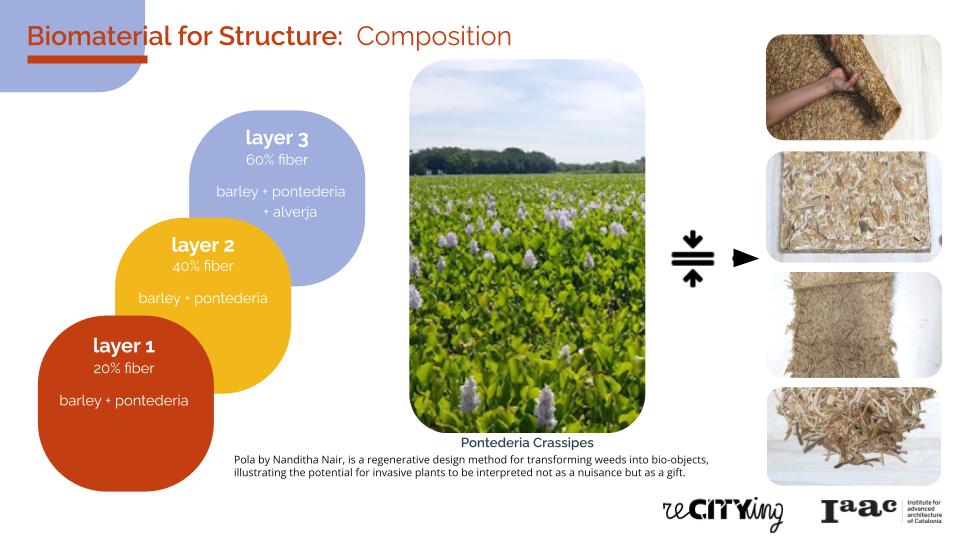
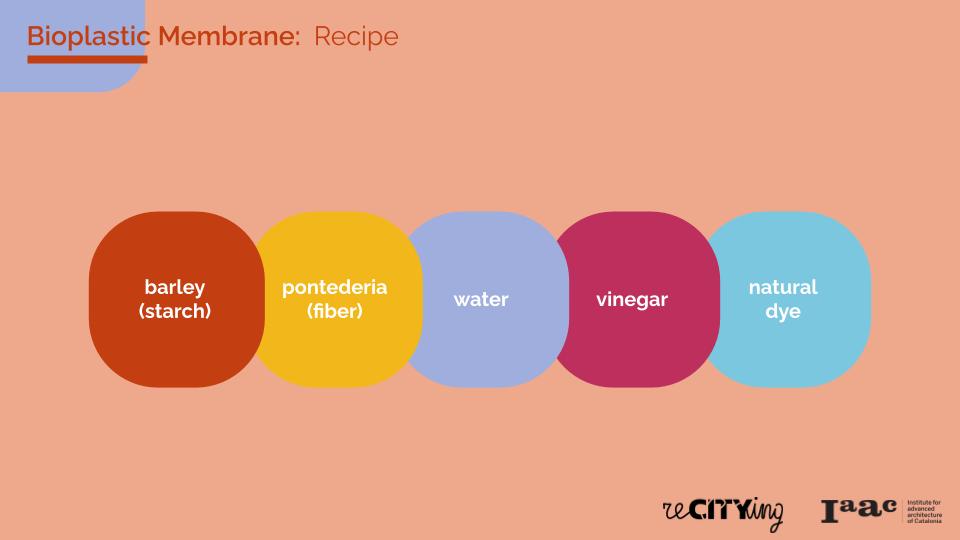
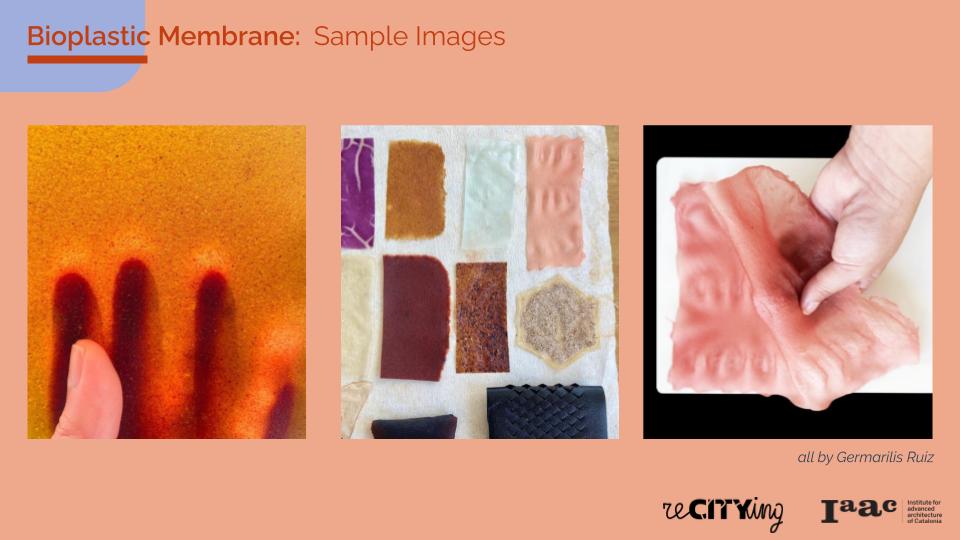
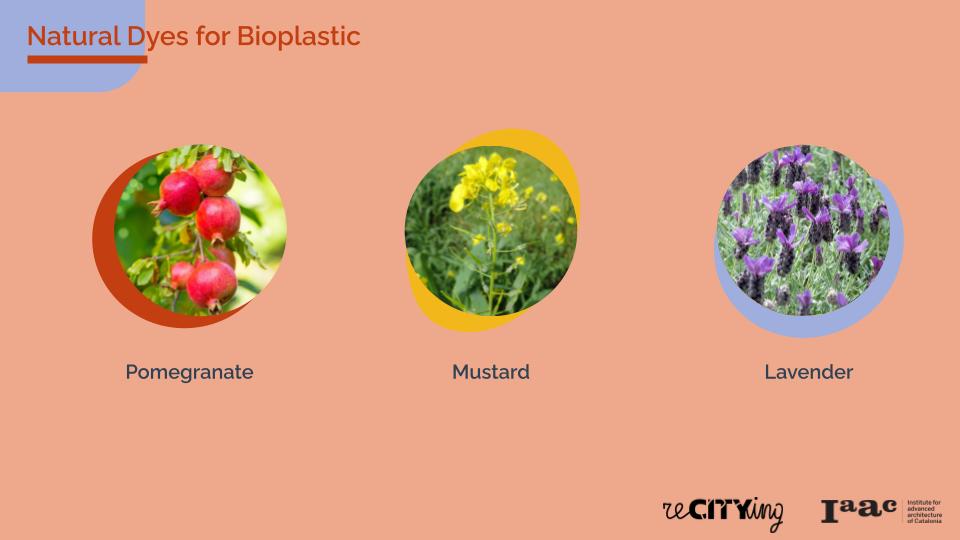
For the structure of Catalunya’s “Table,” we deliberately chose locally available materials to align with the sustainable and regenerative nature of the project. Our material selection was influenced by the specific needs of the site and its ecosystem. One of the primary components is bio-plastic made from barley starch, which gives the structure a flexible, fabric-like quality. This bioplastic membrane not only provides structural integrity but also symbolizes the organic, adaptable nature of the installation.
We also utilized Pontederia Crassipes, an invasive plant found abundantly on the site. By compressing its fibers, we created durable slabs that form the framework of the installation. This method helped repurpose a plant that is typically a nuisance to farmers into a resource, thus offering a sustainable solution to managing local biodiversity challenges.
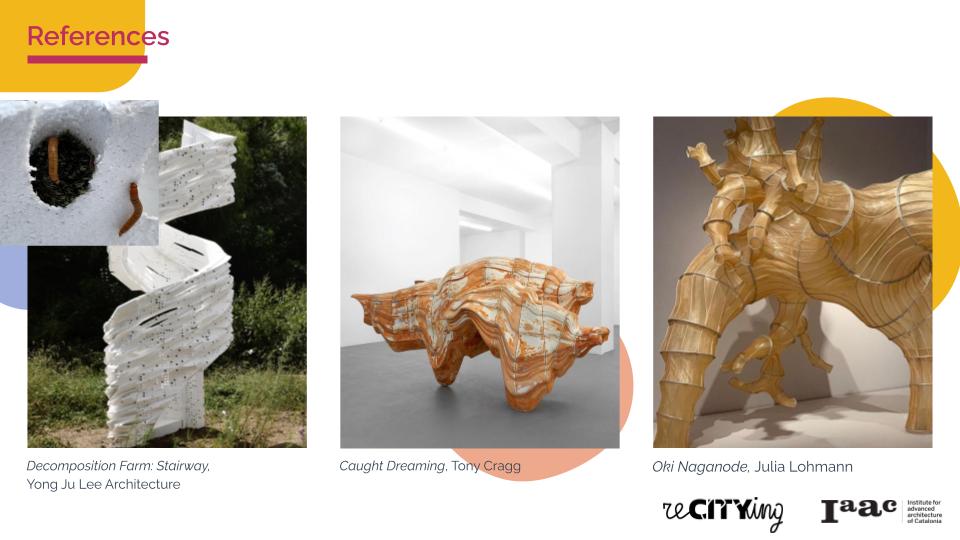

To further enhance the ecological interaction, we incorporated Alverja flowers into pockets within the design. These pockets attract birds, which play a critical role in pollination, supporting the productivity of the surrounding farmlands. By integrating this plant and attracting pollinators, the installation actively participates in the ecosystem’s regenerative processes, embodying the theme of cross-species collaboration.
Each of these material choices contributes to the overall goal of creating a multi-species gathering space reflecting the interconnectedness between human and non-human elements. The materials are not just functional but also symbolic of the ephemeral and cyclical nature of the installation, as they will eventually decompose or be repurposed, returning to the ecosystem from which they were derived.
